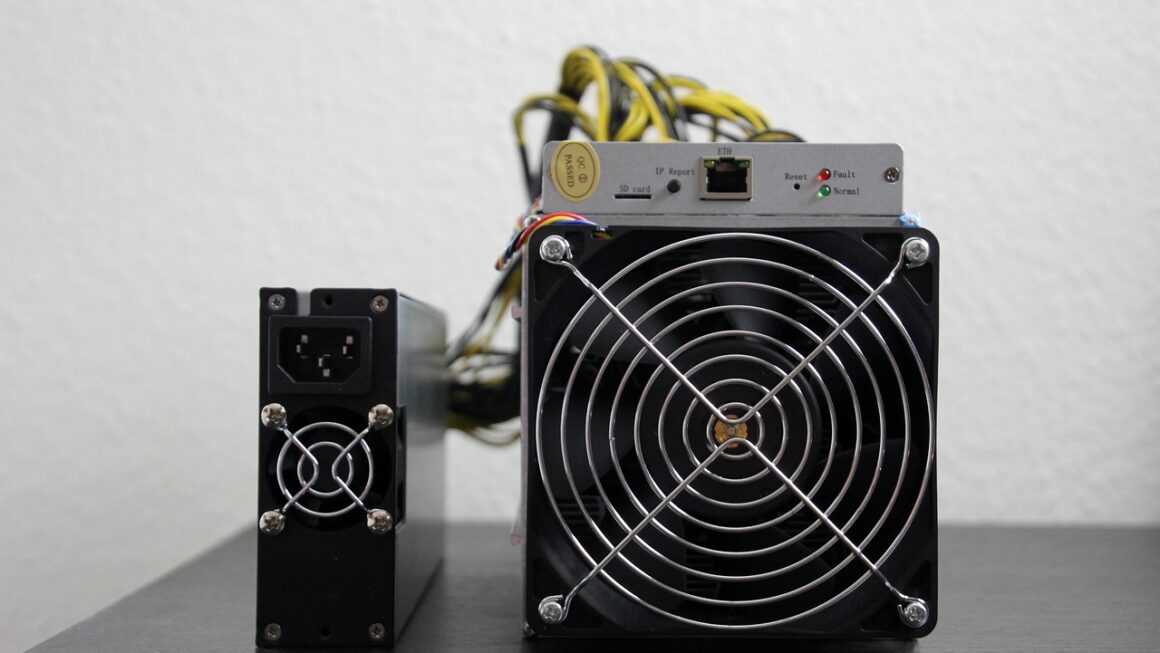Navigating the world of cryptocurrency can feel like entering a complex maze, especially when it comes to understanding the different ways to store your digital assets. Hot wallets are a popular choice for many crypto users, offering convenient access to your funds. But what exactly are they, how do they work, and are they the right choice for you? This comprehensive guide will delve into the intricacies of hot wallets, exploring their features, security considerations, and best practices to help you make informed decisions about safeguarding your cryptocurrency.
Understanding Hot Wallets
What is a Hot Wallet?
A hot wallet is a cryptocurrency wallet that is connected to the internet. Because it is online, it can be accessed at any time and from any device, making it incredibly convenient for frequent trading, small transactions, and general accessibility. Think of it like your everyday spending wallet – you keep enough funds readily available for daily use, but not your entire life savings.
How Hot Wallets Work
Hot wallets typically operate as software applications (desktop, mobile, or web-based) that store your private keys. These keys are essential for authorizing cryptocurrency transactions. Because the wallet is online, the private keys are also stored online, albeit usually encrypted. When you initiate a transaction, the wallet uses your private key to digitally sign the transaction, allowing it to be broadcast to the blockchain and confirmed by the network.
Types of Hot Wallets
There are several types of hot wallets, each offering a slightly different approach to usability and security:
- Desktop Wallets: Installed on your computer, providing a dedicated software application for managing your crypto. Examples include Electrum and Exodus (which also supports cold storage integration).
- Mobile Wallets: Designed for smartphones and tablets, allowing you to access your crypto on the go. Examples include Trust Wallet and MetaMask (primarily an Ethereum wallet).
- Web Wallets: Accessed through a web browser, offering convenience and accessibility from any device with an internet connection. Examples include Blockchain.com and Coinbase Wallet (managed custodial wallet).
- Exchange Wallets: Provided by cryptocurrency exchanges, allowing you to store and trade your crypto directly on the exchange platform. Examples include wallets offered by Binance, Kraken, and Coinbase.
Advantages of Using Hot Wallets
Convenience and Accessibility
The primary advantage of hot wallets is their unparalleled convenience. Here are some key benefits:
- Easy Access: Access your crypto 24/7 from anywhere with an internet connection.
- Fast Transactions: Quickly send and receive cryptocurrencies, ideal for frequent trading and everyday use.
- User-Friendly Interface: Most hot wallets offer intuitive interfaces, making them easy to use for both beginners and experienced crypto users.
- Integration with Exchanges and DApps: Seamlessly interact with cryptocurrency exchanges and decentralized applications (DApps).
Ideal for Frequent Trading and Small Transactions
Hot wallets are particularly well-suited for specific use cases:
- Day Trading: Quickly react to market fluctuations and execute trades on cryptocurrency exchanges.
- Microtransactions: Pay for goods and services online using cryptocurrencies.
- DApp Interaction: Interact with decentralized applications (DeFi platforms, NFT marketplaces, etc.) easily and efficiently.
Example: Using a Mobile Hot Wallet for Daily Purchases
Imagine you want to buy a coffee at a café that accepts Bitcoin. With a mobile hot wallet like Trust Wallet, you can quickly scan the QR code provided by the café and authorize the transaction in seconds, directly from your phone. This makes using cryptocurrency for daily purchases quick and easy.
Security Considerations and Risks
Vulnerability to Online Attacks
Because hot wallets are connected to the internet, they are inherently more vulnerable to online attacks compared to cold wallets. Here are some common threats:
- Malware: Malicious software can steal your private keys from your computer or mobile device.
- Phishing: Fraudulent emails or websites can trick you into revealing your private keys or login credentials.
- Hacking: Direct attacks on the wallet provider or the user’s device can compromise your crypto.
Best Practices for Securing Your Hot Wallet
While hot wallets carry risks, you can mitigate them by following these best practices:
- Enable Two-Factor Authentication (2FA): Add an extra layer of security by requiring a code from your phone or another device in addition to your password.
- Use Strong Passwords: Create complex and unique passwords for your wallet and other online accounts.
- Keep Your Software Updated: Regularly update your operating system and wallet software to patch security vulnerabilities.
- Avoid Phishing Scams: Be wary of suspicious emails, links, and attachments. Always verify the authenticity of websites and communications before entering your credentials.
- Use a Secure Network: Avoid using public Wi-Fi networks for transactions, as they are often less secure.
- Consider a Hardware Wallet for Larger Holdings: If you hold significant amounts of cryptocurrency, consider using a hardware wallet (cold storage) for long-term storage and a hot wallet for smaller amounts intended for daily use.
Example: Protecting your MetaMask Wallet
Let’s say you use MetaMask to interact with Ethereum DApps. To enhance your security, you should enable 2FA (if available via a service like Authy connected to your Google account). Regularly check for updates to the MetaMask extension in your browser and only download it from the official MetaMask website to avoid phishing scams. Also consider using a hardware wallet like Ledger or Trezor in conjunction with MetaMask to securely store your private keys offline.
Choosing the Right Hot Wallet
Factors to Consider
When selecting a hot wallet, consider the following factors:
- Security: Evaluate the security features offered by the wallet, such as 2FA, multi-signature support, and encryption.
- Supported Cryptocurrencies: Ensure the wallet supports the cryptocurrencies you intend to store.
- User Interface: Choose a wallet with an intuitive and user-friendly interface.
- Reputation: Research the wallet provider’s reputation and security track record. Look for reviews and feedback from other users.
- Platform Compatibility: Select a wallet that is compatible with your preferred devices (desktop, mobile, or web).
- Fees: Consider any transaction fees or other charges associated with using the wallet.
Popular Hot Wallet Options
Here are some popular and reputable hot wallet options:
- MetaMask: A popular browser extension and mobile wallet for Ethereum and other EVM-compatible blockchains. Known for its ease of use and integration with DApps.
- Trust Wallet: A mobile wallet that supports a wide range of cryptocurrencies and blockchain networks. Offers built-in support for staking and DApp browsing.
- Exodus: A desktop and mobile wallet with a user-friendly interface and support for multiple cryptocurrencies. Offers built-in exchange functionality.
- Coinbase Wallet: A separate, non-custodial wallet from the Coinbase exchange that gives users full control over their private keys. Supports a wide range of cryptocurrencies and DApps.
Practical Tip: Start with a Small Amount
When trying out a new hot wallet, start by transferring a small amount of cryptocurrency to test its functionality and security. This will help you familiarize yourself with the wallet and identify any potential issues before storing larger amounts.
Hot Wallets vs. Cold Wallets
Key Differences
The primary difference between hot and cold wallets lies in their connectivity to the internet:
- Hot Wallets: Connected to the internet, offering convenience and accessibility but also increased vulnerability to online attacks.
- Cold Wallets: Stored offline, providing greater security but less convenience for frequent transactions.
When to Use a Hot Wallet vs. a Cold Wallet
Here’s a general guideline on when to use each type of wallet:
- Hot Wallet: Ideal for daily use, frequent trading, and interacting with DApps. Keep only a small portion of your crypto in a hot wallet.
- Cold Wallet: Best for long-term storage of large amounts of cryptocurrency. Store the bulk of your crypto in a cold wallet.
Combination Approach
Many crypto users adopt a combined approach, using both hot and cold wallets to balance security and convenience. For instance, you might keep a small amount of Bitcoin in a mobile hot wallet for daily transactions, while storing the majority of your Bitcoin in a hardware wallet (cold storage) for long-term security.
Conclusion
Hot wallets are an essential tool for navigating the cryptocurrency landscape, offering convenient access to your digital assets for everyday use and frequent trading. However, it’s crucial to understand the security risks associated with hot wallets and implement best practices to protect your funds. By carefully choosing a reputable wallet, enabling security features like 2FA, and adopting a combined approach with cold storage for larger holdings, you can safely and effectively manage your cryptocurrency portfolio. Remember that the key is finding a balance between accessibility and security that aligns with your individual needs and risk tolerance.




